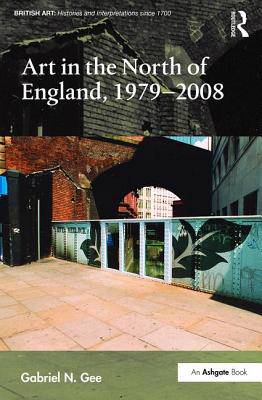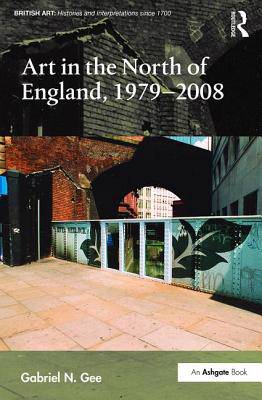
Door een staking bij bpost kan je online bestelling op dit moment iets langer onderweg zijn dan voorzien. Dringend iets nodig? Onze winkels ontvangen jou met open armen!
- Afhalen na 1 uur in een winkel met voorraad
- Gratis thuislevering in België vanaf € 30
- Ruim aanbod met 7 miljoen producten
Door een staking bij bpost kan je online bestelling op dit moment iets langer onderweg zijn dan voorzien. Dringend iets nodig? Onze winkels ontvangen jou met open armen!
- Afhalen na 1 uur in een winkel met voorraad
- Gratis thuislevering in België vanaf € 30
- Ruim aanbod met 7 miljoen producten
Zoeken
Omschrijving
Based on rare archival material and numerous interviews with practitioners, Art in the North of England 1979-2008 analyses the relation between political and economic changes stemming from the 1980s and artistic developments in the principal cities of the North of England in the late 20th century. Looking in particular at the art scenes of Liverpool, Manchester, Leeds, Sheffield and Newcastle, Gabriel Gee unveils a set of powerful aesthetic reactions to industrial change and urban reconstruction during this period on the part of artists including John Davies, Pete Clarke, the Amber collective, Richard Wilson, Karen Watson, Nick Crowe & Ian Rawlinson, John Kippin, and the contribution of organisations such as Projects UK/Locus +, East Street Arts, the Henry Moore Sculpture Trust and the Bluecoat Gallery in Liverpool. While the geographical focus of this study is highly specific, a key concern throughout is the relationship between regional, national and international artistic practices and identities. Of interest to all scholars and students concerned with the developments of British art in the second half of the 20th century, the study is also of direct pertinence to observers of global narratives, which are here described and analysed through the concept of trans-industriality.
Specificaties
Betrokkenen
- Auteur(s):
- Uitgeverij:
Inhoud
- Aantal bladzijden:
- 260
- Taal:
- Engels
- Reeks:
Eigenschappen
- Productcode (EAN):
- 9781472431226
- Verschijningsdatum:
- 22/07/2016
- Uitvoering:
- Hardcover
- Formaat:
- Genaaid
- Afmetingen:
- 160 mm x 234 mm
- Gewicht:
- 635 g

Alleen bij Standaard Boekhandel
+ 391 punten op je klantenkaart van Standaard Boekhandel
Beoordelingen
We publiceren alleen reviews die voldoen aan de voorwaarden voor reviews. Bekijk onze voorwaarden voor reviews.











